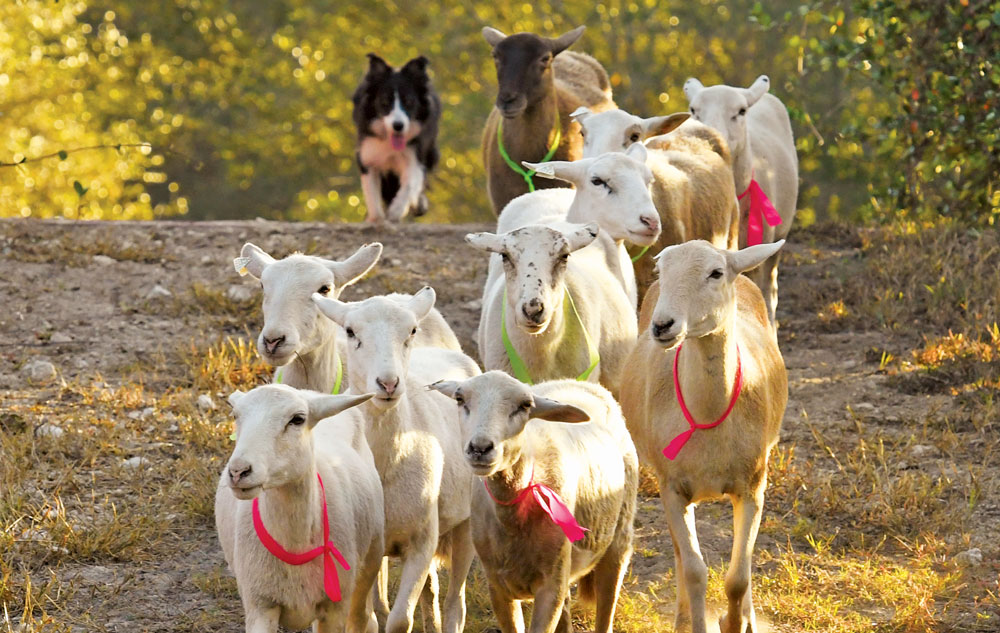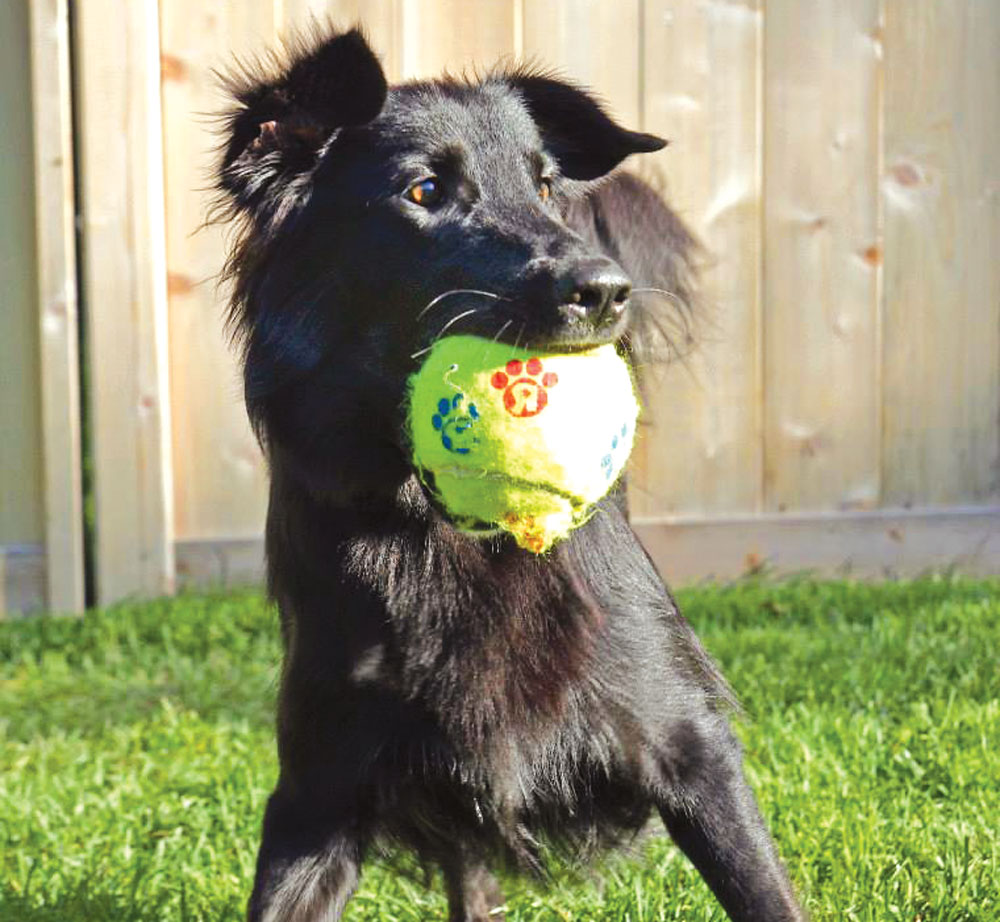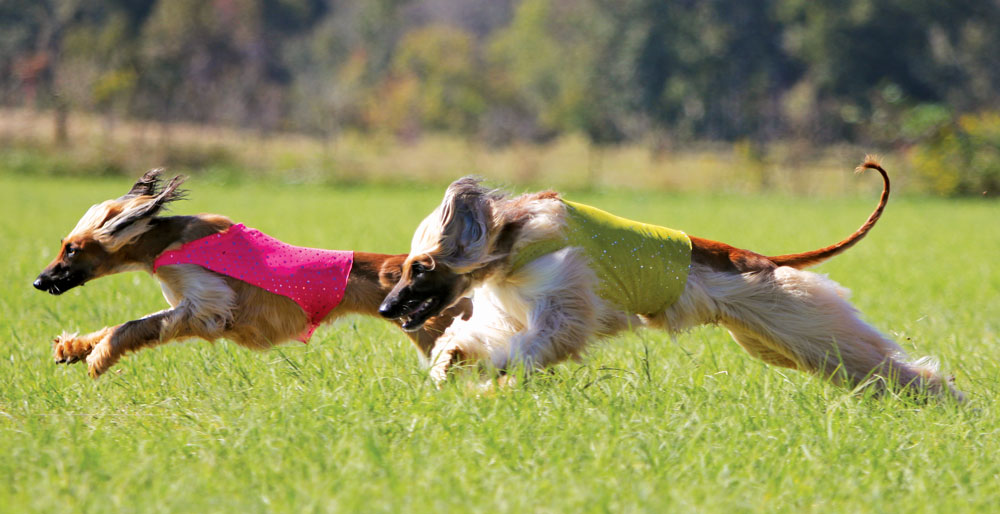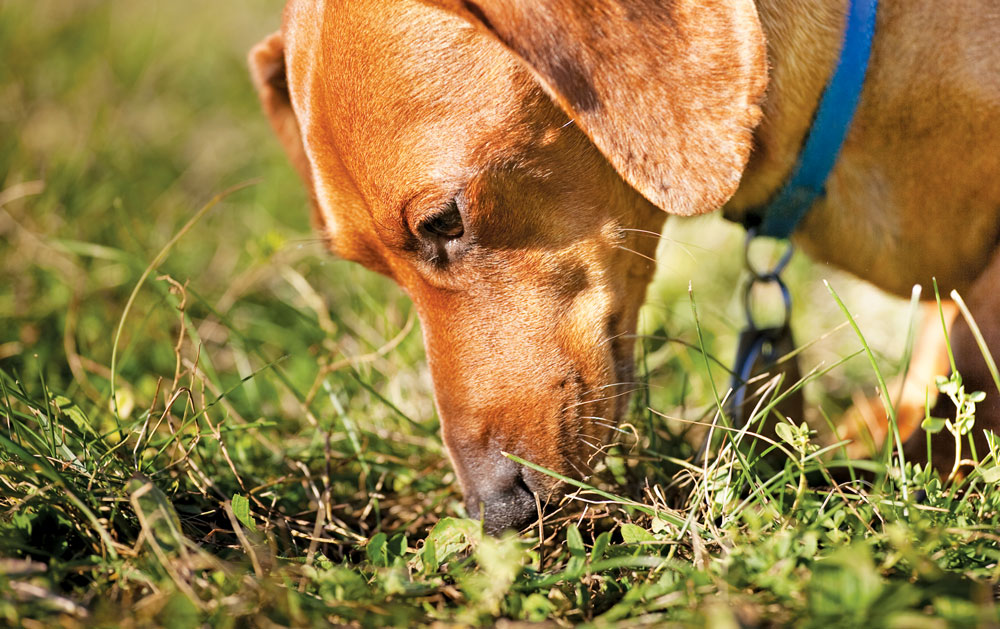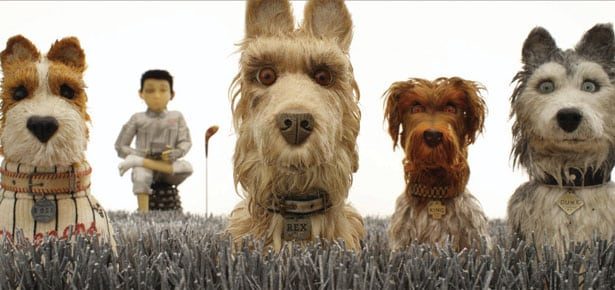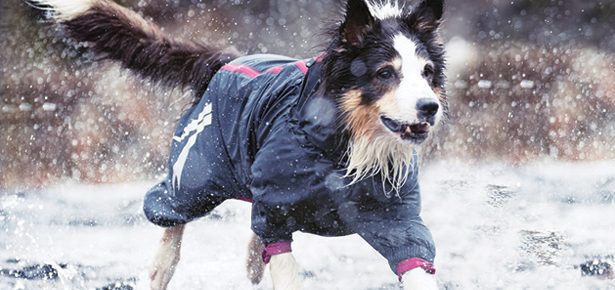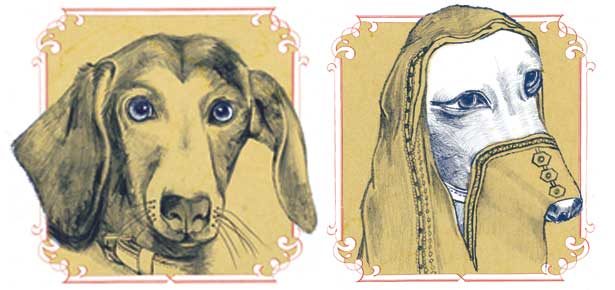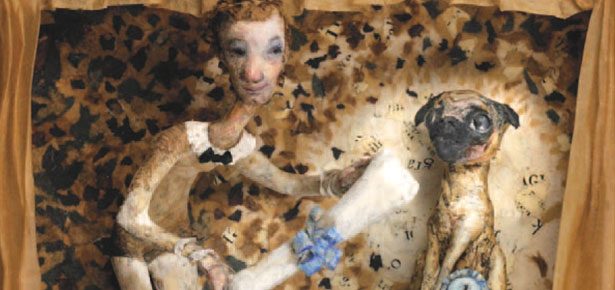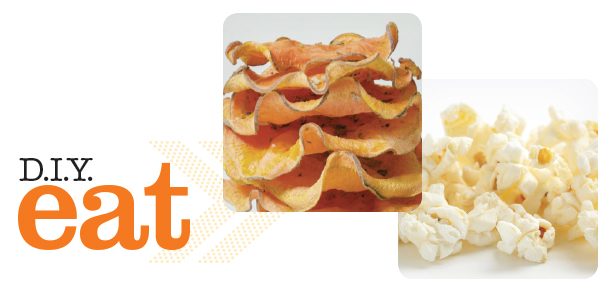
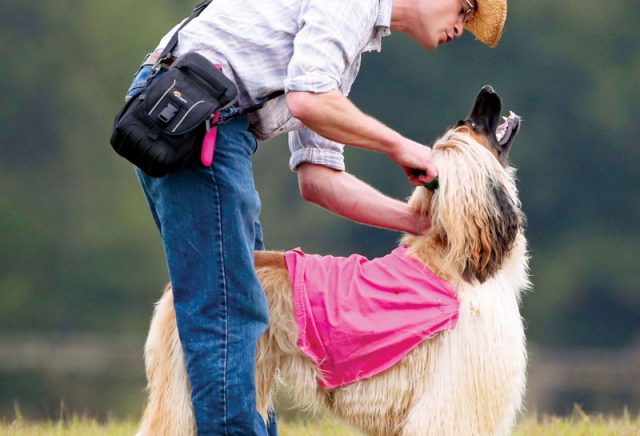
5 Fun Dog Sports!
Get fit, have fun, keep your dog mentally and physically engaged, make new friends—these five popular dog activities may just prove to be your undiscovered passion. Just ask these participants…
Dog sports to keep you and your pup socialized, happy, and fit.

Here is our list of our favorite sports for dogs:
#1 Flyball
What it is: Flyball is a type of relay race that involves teams of four dogs. Each dog from a team runs, in relay fashion, down a course, jumping hurdles as they race towards the flyball box. The flyball box, once triggered by the dog, releases a tennis ball that the dog must retrieve before returning over the jumps back to her handler. Once a dog has completed the course, the next dog is released from the starting line.
Who they are: Terri Botsford, Sherlock, and Miranda
If you were on a high school sports team, you likely have fond memories of travelling with your team, bonding over sport, and the thrill of competition. Terri Botsford does, and in a way, is living it all over again—but this time, with her dog.
“I love that flyball is a team sport between me and my dog, as well as team sport of other dogs and handlers, much like the basketball and softball teams I used to be on in school,” says the captain of Syracuse Flyball in Syracuse, New York.
Just like back in high school, the sport has also allowed her to make friends with people on teams all over the country.
“Flyball people may be competitive, but everyone loves helping and meeting other teams,” she says. “It’s a very close-knit community.”
She’s so committed to the sport, she’s started not one, but two teams. It all began 20 years ago in Maryland, where she took a flyball and agility course with her Jack Russell Terrier and fell in love with the sport. There wasn’t a flyball team in her part of Northern Virginia, so she started her own team and worked with the local recreational centre to offer flyball classes. She eventually had enough people to compete.
Flyball is for team players, and for dogs that have no dog or people aggression, says Terri. After that, you’re golden. Although the majority of dogs that play flyball are medium-sized dogs, Terri believes that as long as they’re in good physical shape, “just about any dog can be trained to play, even if the dog has no ball drive. Some take longer than others to learn. I’ve seen dogs from Chihuahuas to Great Danes run,” says Terri, who competes with Sherlock, her three-year-old Australian Labradoodle and Miranda, her two-year-old rescue Border Collie/Australian Cattle Dog mix.
About three years ago, Terri moved back to Chittenango, New York, and started teaching flyball with the Syracuse Obedience Training Club, where she sits on the board of directors.
“Within a year, we had enough dogs ready to compete,” she says. The group hosts two flyball tournaments a year, but there are tournaments in the United States every weekend for those willing to travel.
In terms of getting started, the team needs a flyball box ($500 to $2,000), wooden jumps (which you can make yourself), and a lot of tennis balls. “We used to go to local tennis clubs and put a box up asking for their old/used ones,” Terri says.
As for the dogs, “I think they love the running free and having a job to do,” says Terri. “I think they also love doing this with their handler. It certainly builds a bond.”
#2 Herding Trials
What it is: This sport that allows herding dogs to engage in an instinctual behaviour. Herding dogs help farmers and ranchers manage their livestock by gathering and sorting animals. Herding trials mimic the work herding dogs would do on a farm or ranch. During training and trials, the handlers give commands and allow dogs to herd cattle, sheep, and ducks, as well as goats, geese, and turkeys.
Who they are: Kathy Walker, Hoss, Nelly, Jigs, and Possum
Twenty years ago, Kathy Walker acquired a puppy from a working bloodline. Lucy was a herding bred dog, and needed some sort of job, says Kathy. She was a talented herding dog and taught Kathy quite a bit about herding.
Fast forward to present, and Kathy now has three Australian Cattle Dogs, Hoss, Nelly, and Possum, as well as Jigs, a Working Kelpie. And she rarely spends time without her dogs.
Kathy and her dogs train at Alan and Maureen Aulson’s Black Prong Equestrian Center, an internationally recognized facility in the Goethe State Forest in Bronson, Florida that hosts horse and dog events, including two American Herding Breed Association (AHBA) trials annually, as well as herding clinics. The AHBA trials include ranch, arena, and open field courses.
Herding requires a larger investment than most of the sports profiled here. Aside from the time investment, participants need a herding dog, livestock to work in a suitable location, and a trainer.
And then there’s the matter of weather. Unlike most other dog sports, there is usually no option to work indoors, so practitioners in most areas of the U.S. need to work around weather. In Florida, there are herding trials in September through May, with a break in the summer to avoid the hot weather. Kathy keeps active year-round, frequently travelling to herding trials with her dogs.
Many dogs, including Kathy’s, are both working animals and do herding as a sport. It gives them a purpose. “Dogs that have a strong genetic instinct to herd enjoy this type of sport and would rather work livestock than just about anything else,” Kathy says.
#3 Rally obedience
What it is: In rally obedience, dogs of all breeds and their handlers complete a course made up of signs describing specific obedience exercises to perform while judges observe.
Who they are: Tania Calverley and Babette
Babette is a special dog.
Born missing a foot on one of her hind legs, Babette, a Flat-Coat Retriever/Border Collie mix, had a full amputation at four months; with no pad or paw on the leg, she had begun to get ulcerations, necessitating the surgery. It didn’t slow her down one bit—her nickname at the dog park is The Bullet, says owner Tania Calverley.
They tried agility, but the energy and the sounds were too much for Babette. That’s when Tania thought she might be better suited to rally.
“It’s just a quieter sport. For us, it has helped Babette focus on me and learn how to be around big groups and keep it together,” she says.
In Canada, there are two streams for competitive rally obedience—the Canadian Kennel Club, which does not allow lame dogs, and Canadian Association of Rally Obedience (CARO), which is open to dogs of all abilities.
“Since agility wasn’t for her, I figured rally would be a better fit—still physical, still very mental, but lower key and a quieter environment,” says Tania, who says she knows of other three-legged dogs, as well as blind and deaf dogs that compete. “I was right. She flourishes in the ring, eager to please and quite happy with herself when she does a good job.”
“Rally has given Babette and I time to bond closer to each other,” Tania says. “It’s also upped her confidence and reduced her anxiety levels. I would definitely recommend rally to anyone who wants to increase the bond with their dog, improve their obedience but work in a calmer, less high-strung environment.”
#4 Lure Coursing
What it is: Lure coursing is a fast-paced chase sport that was developed as an alternative to hare coursing. Rather than chasing a live animal, dogs chase an artificial lure across a field to compete for the best time. Sometimes, obstacles are involved in the race. This is an ideal activity to allow your dog to act upon his chase instinct in a safe, humane way. Lure coursing has both trials and tests. Trials are for sighthounds; dogs run head to head and are categorically evaluated against one another. Tests, like CATs and FastCATs, are for all breeds. Both trials and tests are popular in the U.S., but all-breed lure coursing groups are becoming more common.
Who they are: Eddie and Selma Kominek and Narcissa, Ingvar, Lena, Brienne, Cersei, and Soleil
It was at an American Kennel Club show in Georgia, 2004, that Eddie Kominek and his wife Selma first stumbled across lure coursing. There, they had their first lure coursing tests with their Afghan Hounds, Joey and Phoebe.
“I found the sport more engaging than dog shows, showing off the abilities of our sighthounds,” says Eddie.
It wasn't until a few years later, when they had an Afghan Hound, Reza, who really loved lure coursing, that they started routinely going to lure coursing trials.
For beginners, there is very little equipment necessary. Dogs need to be in good running shape before starting. Handlers need a slip-lead—a special lead used to release a coursing hound quickly—and a set of coloured blankets or jackets which allows them to tell the dogs apart at a distance.
In 2009, the Komineks began open field coursing with their Afghans. After 12 years in the sport, Eddie and Selma bought 102 acres in Limestone, Tennessee for lure coursing. Kominek Farms plays host to about 15 to 20 lure coursing trials a year and in 2017, the American Kennel Club National Lure Coursing Championship was held there. Their six Afghan hounds: Narcissa, 19 months; Ingvar, 2.5 years; Lena, 3; Brienne, 5; Cersei, 7; and Soleil, 10, are all participants in sighthound lure coursing in either Open or Field Champion stakes.
Well-known in the American lure coursing community, Eddie and Selma are both lure coursing judges and field trial secretaries. Eddie also manages equipment and lure operate—he pushes the button that makes the “bunny” run—his favourite job on the field.
“It's an exceptionally challenging role, taking years of practice before someone is allowed to operate for a trial with multiple hounds,” he says. “It's also super fulfilling when beautifully run courses are run and you had a hand in that.”
But the best part of the sport? Seeing the hounds enjoy doing what comes instinctually. “They come off the field satisfied, pleasantly tired and are always willing to do it again once that lure is fired up,” he says.
#5 Tracking
What it is: A dog’s nose knows—smell is a dog’s strongest sense. Humans have taken those natural instincts and have trained working dogs to track things besides prey, like lost people, belongings, and drugs and explosives. Tracking trials mimic search-and-rescue missions, assessing the dog's natural ability and willingness to follow a trail left by human footsteps.
Who they are: Gina Snow and Moby
Gina Snow had always been active with her dogs.
The owner of five Jack Russell terriers, Gina’s dogs compete in agility, dock diving, racing, lure coursing, rally, and earth dog events. But one day, she saw her male Jack Russell Terrier, Moby, sniffing around the yard.
“He had a natural tendency to follow scent trails,” she says. “I saw him doing this consistently after I had walked in certain areas in my yard and let him out after.”
Turns out Gina’s instinct for her dog’s talents were right. Ten years later, Gina and Moby, now 13, have found great success in the field. Participants in the Dog Tracking Club of Maine in Portland, Maine, they’ve earned the American Kennel Club’s Tracking Dog Urban title once and the Tracking Dog title twice.
What may surprise some people is that all dog breeds can get
involved.
“Some breeds and individuals are more natural than others, but every dog has a nose,” Gina says. “Tracking tests take place in all types of weather and terrain so that will play into the dog's desire for the sport too.”
In the beginner levels of tracking, the surfaces are not as varied and the tracks are shorter. In the higher levels, the tracks can be quite long and the surface very tricky at times (over logs, high grass, through standing water). Tracks can be run in any type of weather so being able to withstand severe heat or cold may be a component too.
“Short, successful repetitions are key,” says Gina. “When training, I often tracked about three times per week.” She recommends short and simple tracks to start and increasing difficulty by adding older tracks, turns, different surface types and distractions.
Any dog over six months of age can compete in AKC tracking, says Gina. As for how old they can be and still compete, it depends on the individual dog. The sport is unique in that it is exhausting for the dog without being especially hard on the physical body.
“I think they love the running free and having a job to do…It certainly builds a bond.”
To get started, handlers will need a free-moving harness that allows full extension of the neck and shoulders and some long lines for their dogs, and waterproof footwear for themselves. She adds that blind tracks (tracks set by someone other than yourself) are key for advanced training.
Tracking is the most difficult sport Gina has ever trained for. “It requires a lot of patience and astute observation skills on the handler’s behalf… they must be in tune to the dog's body language,” she says.
“I love how this sport allows a dog to use its natural abilities, sniffing,” says Gina. “It amazes me that a track through a field by a stranger, dropping articles along the way can be followed by my dog three hours later. It shows the capability and strength of the canine nose.”
What dog sports are you going to try?
Join the newsletter and never miss out on dog content again!
"*" indicates required fields
By clicking the arrow, you agree to our web Terms of Use and Privacy & Cookie Policy. Easy unsubscribe links are provided in every email.
